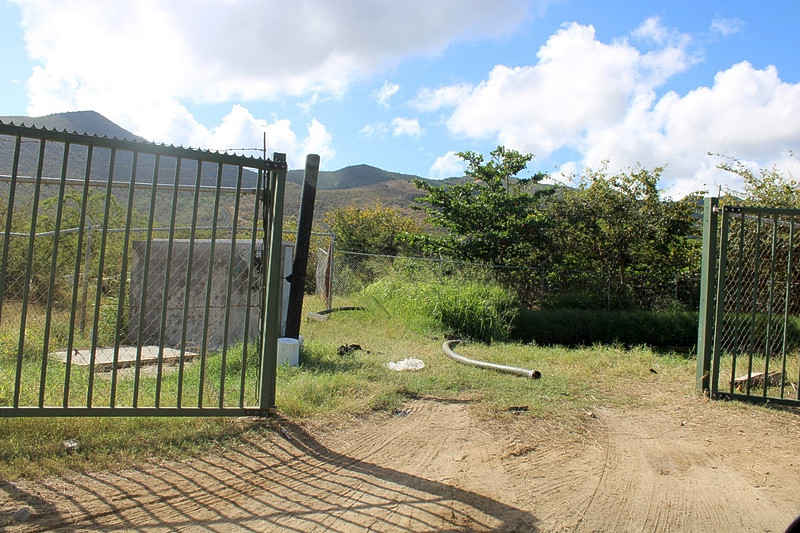A sewage truck at the fenced-in sewage pond in Belvedere, ready to bring pumped-up sewage to the waste-water treatment plant.
PHILIPSBURG--Sewage from the Belvedere community is pumped from a fenced-in open pond next to the Belvedere baseball court and taken to the waste-water treatment facility on Illidge Road by workers who are not wearing protection. After the truck left Belvedere on Tuesday, the gate to the sewage pond was left open.
Wastewater exposure has been linked to viral, bacterial, and protozoan diseases such as salmonellosis, shigellosis, cholera, giardiasis, amoebiasis, hepatitis A, viral enteritis, and other diarrhoeal diseases. Due to frequent contact with untreated wastewater, workers can also experience skin diseases such as dermatitis and rashes.

When the sewage truck left Belvedere, the gate to the sewage pond was left open.At Belvedere, sewage water is not only accumulating within the fenced-off area. Next to it is a trench for collection of rainwater that holds the waste-water run-off from Dutch Quarter, starting at Zorg en Rust, where Pit 3 is located. The pump of this sceptic tank is broken and the pit itself is caving in, with sewage water running downhill toward Belvedere.
Persons living or visiting this area are at risk of becoming ill from waterborne diseases. Reports from the World Health Organisation and many scientific papers show that Escherichia coli can be transmitted by contaminated water or person-to-person contact via the fecal-oral route. While some people exhibit no symptoms, most experience watery or bloody diarrhoea, abdominal cramps, nausea, vomiting, and fever.
Haemolytic uraemic syndrome may develop in 2-7% of those who acquire E. coli O157:H7 infection, causing kidney failure and sometimes death. This syndrome occurs particularly in children under the age of 5, the elderly, and those with weakened immune systems.
While international guidelines require that waste-water workers use specific personal protective equipment, the workers who collect sewage in Belvedere commissioned by the Ministry of Public Housing, Spatial Planning, Environment and Infrastructure wear little to no protection.
Before 10-10-10, the Environment and Hygiene Inspectorate, a department of the Ministry of Public Health, Social Development and Labor VSA Inspectorate, oversaw the collection and transport of sewage, waste-water treatment, and the testing of treated waste-water before discharge. This department was also tasked with issuing guidelines for (the construction of) sewage pits and inspection of these pits on private and government properties.
To date there is no Environment and Hygiene Inspectorate at the VSA Inspectorate, whereas the VROMI Inspectorate is not trained in handling and testing waste-water, nor analysing and advising on waste-water test results.







